Wherever we are in the world, we always enjoy visiting wineries; especially the older historic ones. Tasting wine in the cellars and walking through the ancient caves and vineyards seems to bring out the inner farmer we all have deeply imbedded in our gene pool. And guess what? Spain has oodles of wineries dating back centuries. And they make great relatively inexpensive wine.
Just about 70 km west of Valencia city is the wine region of Utiel-Requena, a D.O. (Denominación de Origen – regulatory term for a specified winemaking region) named for the neighboring towns of Utiel and Requena. There are over 100 wineries in the region, but visiting wineries in Spain can be difficult on your own. You most certainly will need a car and most wineries require appointments and a minimum number of people.
We recently joined a small tour with Valencia Wine Consulting & Tours, a company that offers wine tours and tastings throughout the Valencia region. They give tours in multiple languages including English. Johan de Smedt, the founder of the company, is originally from the Netherslands but now lives in Valencia and did his sommelier training here. He was our leader and guide to Bodega Vera de Estenas in Utiel-Requena.
Our small group of 18 people departed by bus from the Estación del Norte at 9:00 AM sharp for our journey. In the morning hours the countryside was beautiful as the scenery changed from the urban outskirts of Valencia into miles of vineyards nearing the wine country. While we watched the vines pass by our windows, Johan gave us some history of Utiel-Requena.
They have been making wine in the Utiel-Requena region since at least the 7th century BC. The area is best known for growing Bobal, a native grape which accounts for 75 percent of the grapes grown here and was historically used for mass production wine. You are unlikely to find Bobal planted anywhere else in the world outside of this region. In recent years, many wineries have begun to get away from mass production and are focused on producing high quality wines. Bodega Vera de Estenas is one of those wineries.
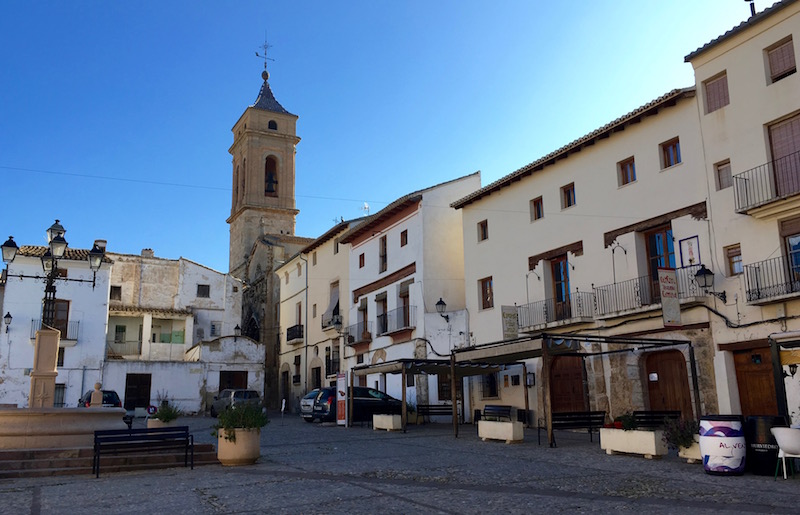
It took a little less than one hour to reach our first stop in the village of Requena. We were dropped off in the middle of the village and Johan led us through the narrow streets to a small doorway. Behind the door and down a steep twisted staircase, we entered the caves of Bodega Honda, where a wine tasting and almuerzo (second breakfast) was set up for us.
Our guide was Eduardo Vives, a fourth generation member of the Martínez Bermell family (owners of the Vera de Estenas winery), and these are his family’s caves. Apparently, every family in Requena used to have a cave. The caves were dug during the 12th and 13th centuries and the excavated clay was used to construct the houses above. They used the cave for storage of food and wine, and a place to hide during an attack. The cave served as the household refrigerator – this we understood, because the temperature below ground felt like an ice box. I was glad to have grabbed a sweater on the way out the door that morning.
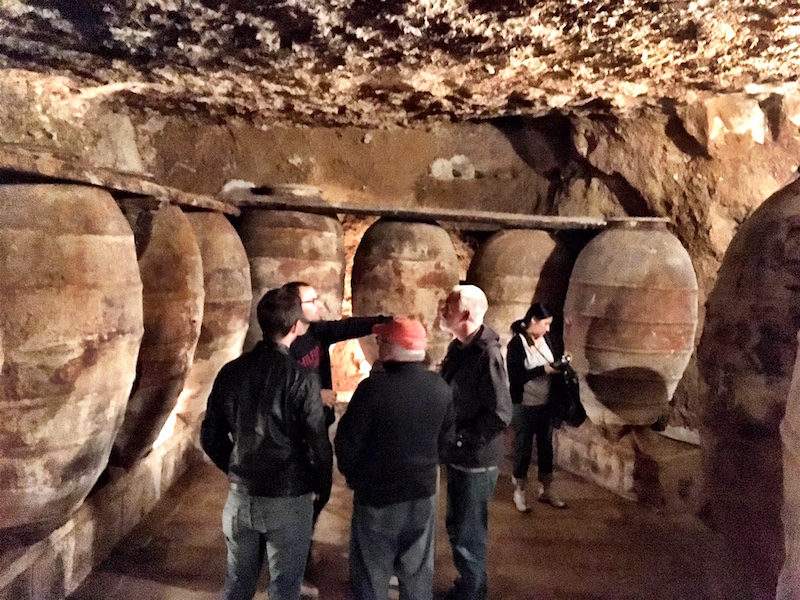
Over the years, many of the caves became convenient places to toss unwanted things, eventually filling them with rubbish. Eduardo’s grandfather cleared these caves to reveal the tinajas (large earthenware jars used to store wine and olive oil) that were buried within. We stood beneath tinajas dating mostly from the late 1800’s. These tinajas were used for wine – Eduardo showed us how to tell the difference. An older section of the cave held tinajas from the 17th century.
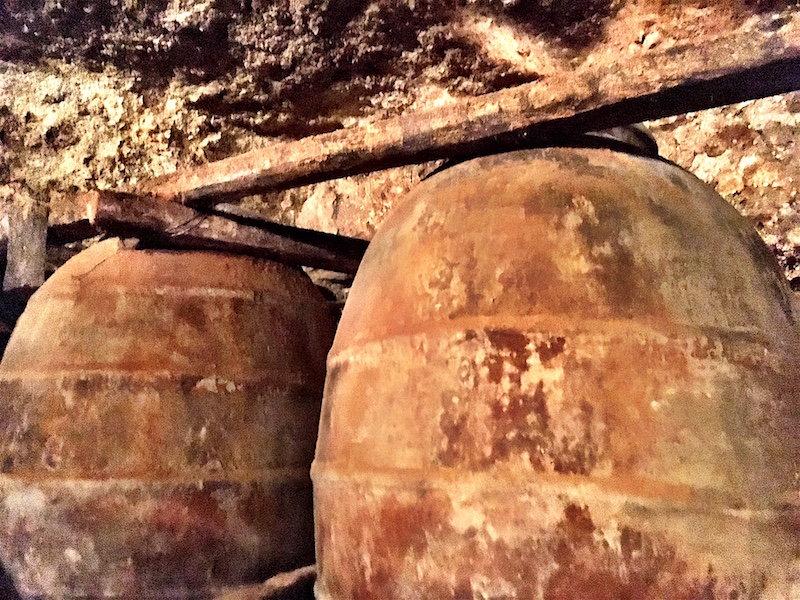

Requena is one of only about 25 villages in Spain that are allowed to produce cava outside of Catalonia. Eduardo explained the cava making process, which uses the French Method de Champenoise. However, the Spanish Cava is typically allowed to rest a much shorter period of time than Champagne, often giving it a lighter, fruitier style.
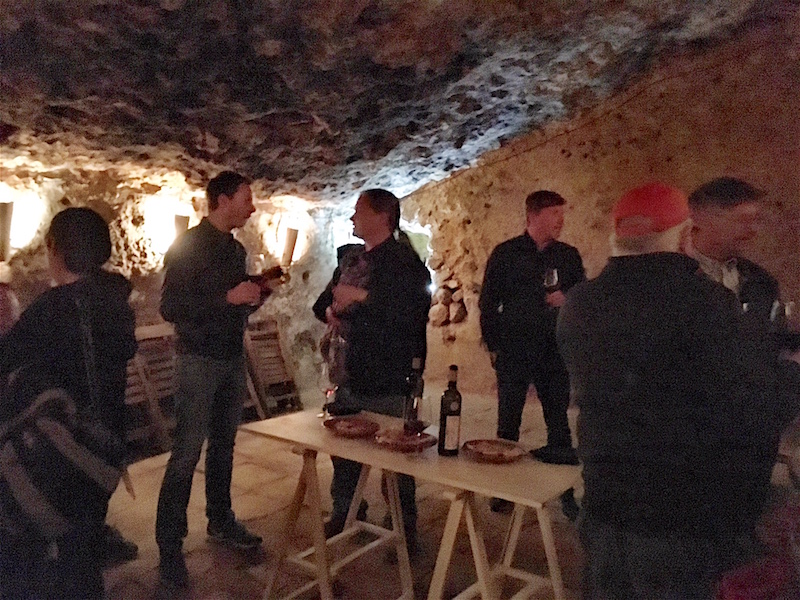
We snacked on empanadillas and sausage bocadillos while we tasted two Vera de Estenas wines. First, the Estenas Rosado made from Bobal grapes was light, dry and smelled of strawberries, getting it’s color from 15 hours spent on the skins of the grapes. This was followed with Estenas Crianza, a red blend of bobal, tempranillo, merlot and cabernet sauvignon. In the chilly subterranean air we had to cup the glasses with our hands to warm the wine and release the fruity notes.

Our guides coaxed us up the staircase (up being much easier than going down) and back to the bus. Our next stop was the beautiful estate of Bodega of Vera de Estenas winery in Utiel. Eduardo’s family purchased the Casa de Don Angel winery in 1981 and moved all of their wine production there. They produced their first vintage wine in 1982. Vera de Estenas was the first Valencian winery to grow varieties like Chardonnay, Merlot, Cabernet Sauvignon and Malbec.
Eduardo led us out into the vineyard to view the property and gave a lesson on grape growing among the 40 year old chardonnay vines. But if you think that’s old, the Bobal vines on the property are up to 90 years old. The vineyard terrain was dry and rocky, offering great drainage for the vines which is excellent for growing grapes.
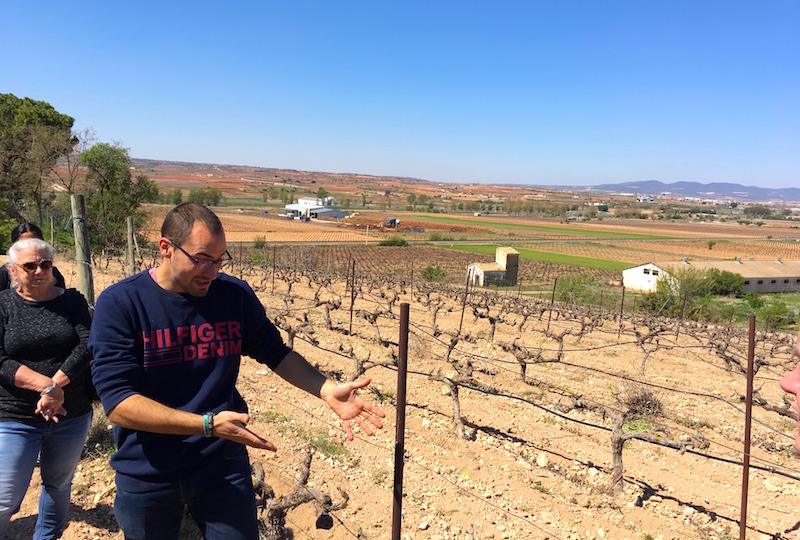
He explained their wine making process from harvesting to bottling and the steps in between. We walked through the old cement lined fermentation tanks (no longer in use, of course) that date back to 1876.


Our bodega tour finished with a tasting of three more Vera de Estenas wines. First, an Estenas Cava Brut Nature made from Macabeo and Chardonnay grapes. The second wine was Casa Don Angel Estenas Malbec 4-5, a Malbec that is a blend of two vintages (2014+2015), a unique idea that was the result of a family experiment over a decade ago. Our last tasting was Martinez Bermell Merlot, a 100% Merlot that was a Vino de Pago Vera de Estenas. Vera de Estenas is one of only 21 wineries in Spain that are allowed to use the Pago designation that defines a small area of a vineyard with a very specific and unique microclimate.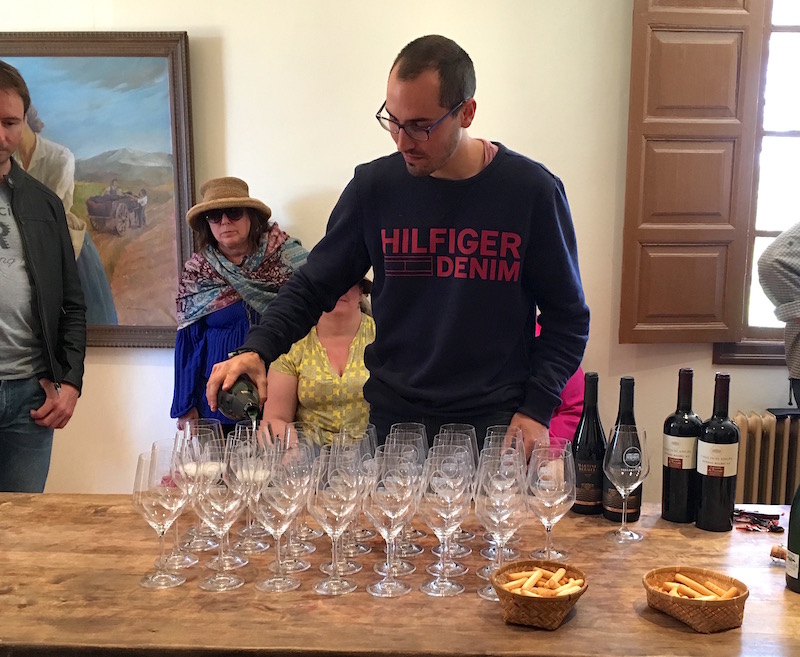

After purchasing some bottles to take home, our very cheerful group loaded back onto the bus to head into the village of Utiel for a lunch of traditional Utiel-Requena cuisine at a local restaurant called Restaurante El Vegano. I should warn that these small villages are not good places to be vegetarian. The local food is hearty and meat-heavy to provide plenty of calories for a lifestyle of hard work.

We started with Morteruelo (a pate-like blend of liver, partridge and rabbit) and Ajoarriero de Bacalao (a creamy dish with salt cod, garlic, and potato). We were able to choose from several options on the menu, which included Gazpacho Manchego, a traditional staple of the area that is nothing like the cold soup that most of us think of as gazpacho. Instead, it is a thick hearty stew of unleavened bread with rabbit and chicken. The Bacalao al Pisto Casero was also quite good. Of course, bottles of local wine were scattered on the table. Dessert and coffee topped off the meal. We arrived back in Valencia around 5PM.
This was a fabulous day trip and a great way to experience some of Spain’s rich history through wine and food. The recent focus on producing quality wines from Bobal grapes makes this a particularly interesting time to visit the bodegas of Utiel-Requena. We cannot wait for the next trip!
If you would like to see more of this Valencia wine tour, Tom Cantrell of Here We Go Again! was there and produced this video that captures the experience nicely:






5 responses to “Day Trip to Bodega Vera de Estenas”
It’s so fun to see the two of you on video!!
LikeLiked by 1 person
If I had known, I would have steered clear of Tom’s camera!
LikeLike
glad i found your blog 🙂 I still write about Spanish food and culture, and visit often… but makes me miss living here, dia a dia. saludos!
LikeLiked by 1 person
Gracias! I’ve also been enjoying reading through your lovely website. It’s been very inspirational.
LikeLike
[…] To read more on touring this beautiful winery, see our previous post Day Trip to Bodega Vera de Estenas […]
LikeLike